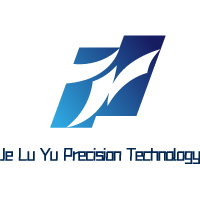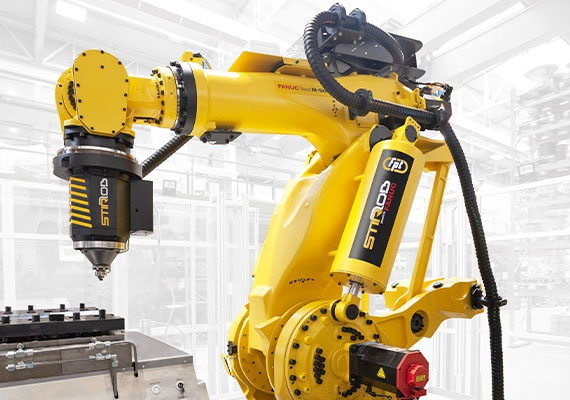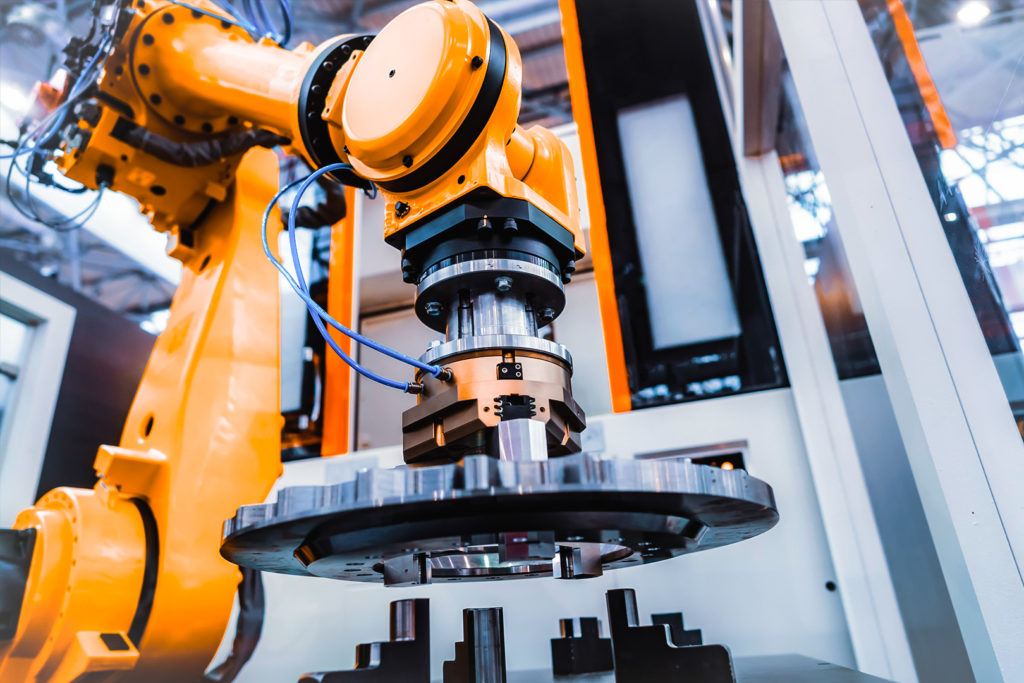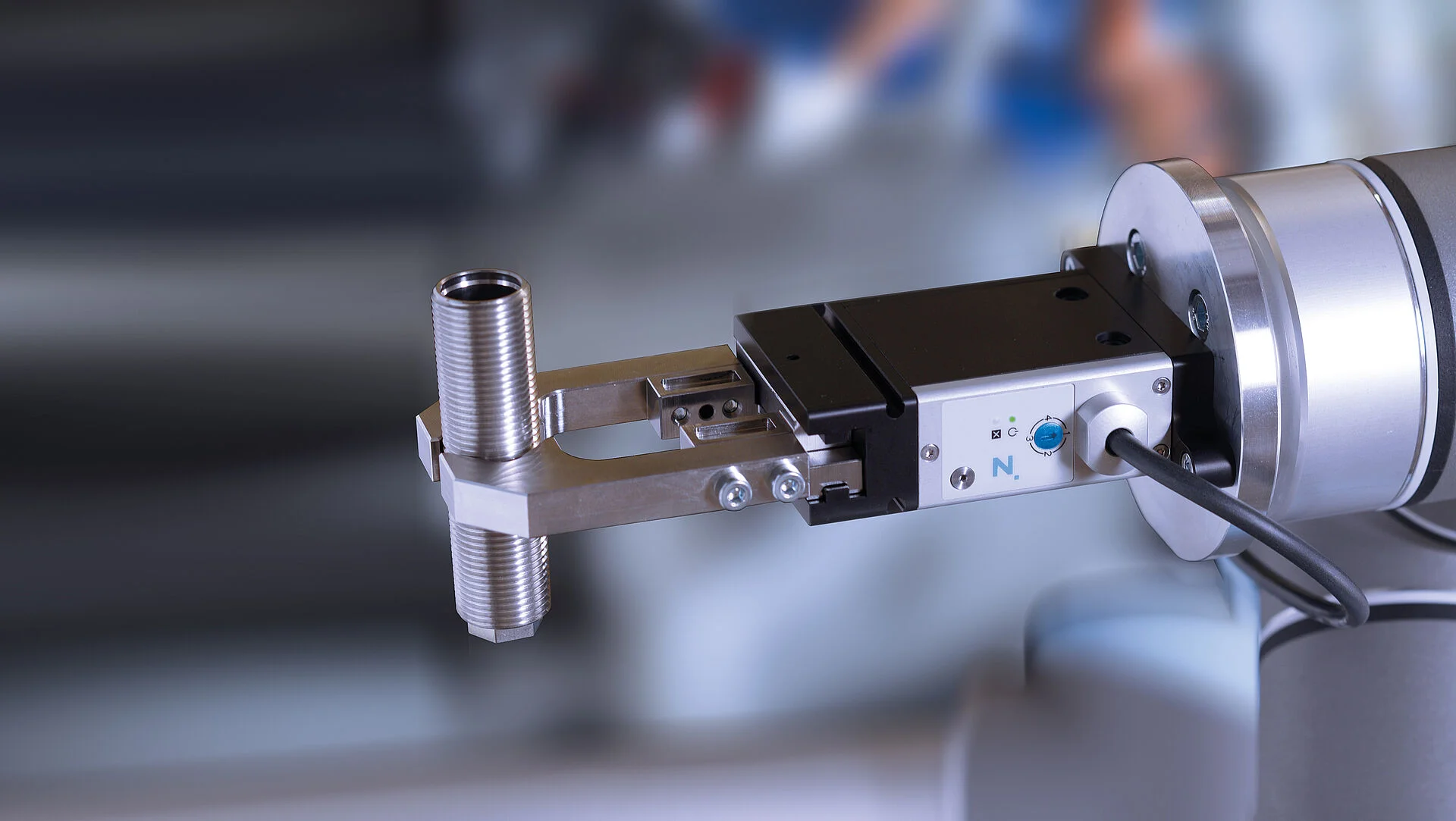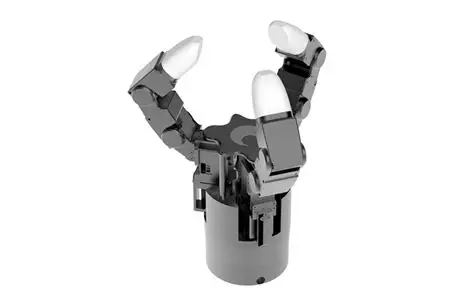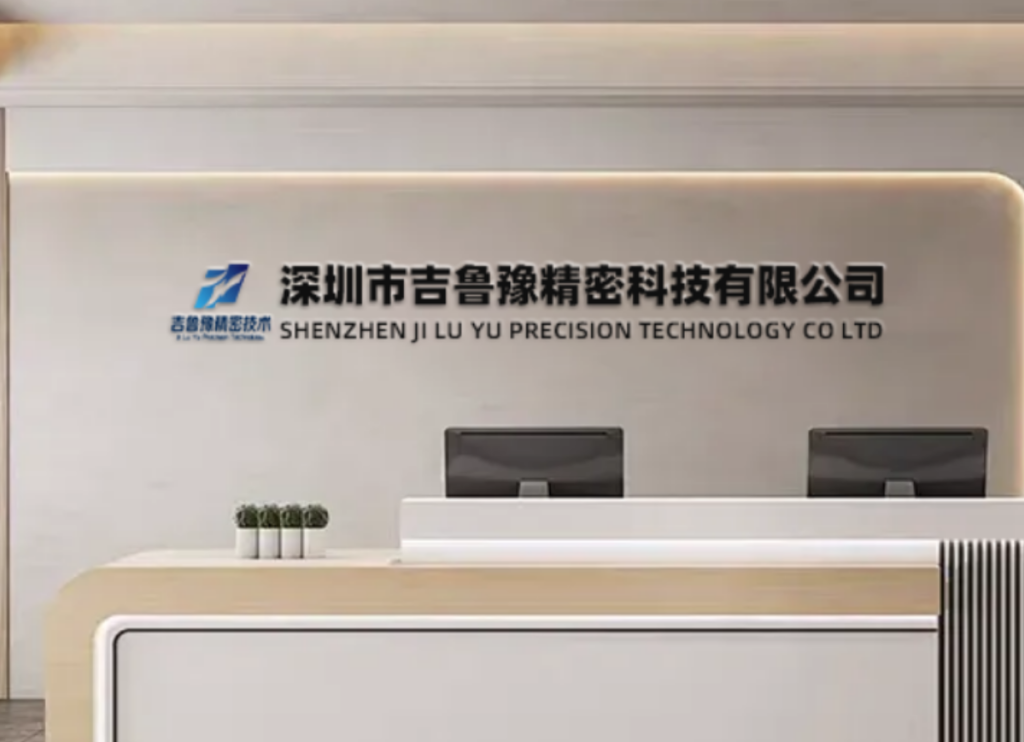Magnetic Innovation in Manufacturing: Transforming CNC Automation with Advanced Gripping Technology
In the precision-driven world of CNC machining, where efficiency and reliability directly impact profitability, the evolution of material handling systems has reached a magnetic revolution. Magnetic Gripper Robot technology represents a paradigm shift in how manufacturers approach component manipulation, offering unprecedented advantages in speed, reliability, and flexibility for ferrous material applications. At JLY Precision Technology, our extensive experience in precision manufacturing has demonstrated that strategic implementation of Magnetic Gripper Robot systems can dramatically transform production efficiency while maintaining the exacting standards required in modern machining environments.
This comprehensive technical analysis examines the fundamental principles, operational advantages, and strategic implementation methodologies of Magnetic Gripper Robot technology within precision CNC machining operations. We will explore the complete spectrum of magnetic gripping solutions, from basic electromagnetic systems to advanced hybrid technologies, providing manufacturers with a detailed framework for optimizing their automated handling processes.
The Fundamental Physics Behind Magnetic Gripping Technology
Understanding the core principles of magnetic gripping is essential for effective implementation in manufacturing environments. Magnetic Gripper Robot systems operate on well-established electromagnetic principles, but their practical application requires sophisticated engineering:
-
Electromagnetic Field Theory: Conventional electromagnetic grippers utilize solenoid principles, where electrical current through coiled wire generates a controlled magnetic field. The field strength follows Ampère’s circuital law, with force output proportional to the square of the magnetic flux density.
-
Permanent Magnet Advancements: Modern rare-earth permanent magnets, particularly neodymium-iron-boron (NdFeB) and samarium-cobalt (SmCo) alloys, provide exceptional magnetic energy products, enabling compact grippers with substantial holding forces without continuous power consumption.
-
Switchable Magnetic Technology: Hybrid systems combine permanent magnets with electromagnetic controls, allowing magnetic circuits to be actively “switched” on and off while maintaining holding force without power. This innovation provides fail-safe operation critical in manufacturing applications.
-
Field Focusing Techniques: Advanced pole piece design and magnetic circuit optimization enable concentration of magnetic flux in specific patterns, maximizing holding force while minimizing gripper weight and energy consumption.
The practical implementation of these principles in Magnetic Gripper Robot systems requires careful consideration of workpiece characteristics, operational environment, and safety requirements to achieve optimal performance.
Technical Classification of Magnetic Gripping Systems
The engineering landscape of Magnetic Gripper Robot technology encompasses multiple distinct approaches, each with specific operational characteristics and application suitability:
1. Electromagnetic Gripping Systems
-
Direct-Current Electromagnets: Utilize continuous DC power to maintain magnetic field, providing consistent holding force with variable control capability through current regulation.
-
Pulse-Operated Systems: Employ short-duration high-current pulses for activation and deactivation, minimizing energy consumption and heat generation during extended operation.
-
Laminated Core Designs: Incorporate layered electrical steel cores to reduce eddy current losses, enabling faster response times and improved efficiency in dynamic applications.
2. Permanent Magnetic Systems
-
Mechanical Switching Mechanisms: Utilize physical movement of permanent magnets within the gripper assembly to engage and disengage magnetic circuits without electrical power requirements.
-
Rotary Field Reorientation: Employ rotating permanent magnet arrays that alter magnetic circuit geometry to switch between active and inactive states with minimal energy input.
-
Flexible Magnetic Matrix Systems: Incorporate multiple small permanent magnets in compliant arrangements that conform to irregular surfaces while maintaining consistent magnetic flux distribution.
3. Advanced Hybrid Technologies
-
Electro-Permanent Magnet Systems: Combine permanent magnets with controlled electromagnetic pulses to switch magnetic states, offering fail-safe operation with minimal energy consumption.
-
Variable Geometry Magnetic Arrays: Utilize independently controlled magnetic elements that can be dynamically reconfigured to optimize holding force distribution across complex workpiece geometries.
-
Intelligent Field Shaping Systems: Incorporate ferromagnetic materials with controlled permeability to actively shape magnetic fields for specialized applications requiring precise flux patterns.
Strategic Advantages in CNC Machining Applications
The implementation of Magnetic Gripper Robot systems in precision manufacturing environments delivers significant operational advantages across multiple performance metrics:
-
Maximized Surface Contact Efficiency: Unlike mechanical grippers that require specific geometric features for engagement, magnetic systems utilize the entire contact surface area, distributing holding force evenly and minimizing localized stress concentrations that could damage precision-machined components.
-
Ultra-High-Speed Operation Capability: The virtually instantaneous engagement and disengagement characteristics of advanced magnetic systems enable significantly reduced cycle times compared to mechanical actuation, particularly beneficial in high-volume production environments where seconds per cycle translate to substantial annual savings.
-
Enhanced Accessibility for Complex Machining Operations: The minimal physical profile of magnetic grippers provides superior tool clearance, enabling complex multi-axis machining operations that would be impossible with bulkier mechanical end-effectors obstructing tool paths.
-
Exceptional Reliability in Contaminated Environments: Magnetic gripping systems demonstrate superior performance in applications involving cutting fluids, metal chips, and other manufacturing contaminants that typically compromise mechanical gripper operation and reliability.
-
Reduced Maintenance Requirements: With no wearing contact surfaces or complex mechanical linkages, properly specified magnetic gripper systems exhibit significantly longer service intervals and reduced maintenance costs compared to conventional gripping technologies.
Technical Comparison: Magnetic vs. Conventional Gripping Technologies
The following table provides a detailed technical comparison of magnetic gripping systems against conventional technologies in precision manufacturing applications.
Table 1: Comprehensive Gripping Technology Comparison Matrix
| Technical Parameter | Magnetic Gripper Robot | Pneumatic Mechanical Gripper | Vacuum Gripping System | Hydraulic Gripper |
|---|---|---|---|---|
| Maximum Force Density | Very High (up to 1.5 N/cm²) | High (0.3-0.8 N/cm²) | Low-Medium (0.1-0.3 N/cm²) | Very High (1.0-2.0 N/cm²) |
| Response Time | Extremely Fast (10-50 ms) | Fast (50-200 ms) | Medium (100-500 ms) | Slow (200-1000 ms) |
| Energy Consumption | Low (Pulse/Switch) | Medium-High | Medium-High | High |
| Workpiece Requirements | Ferromagnetic Materials | Geometric Features | Smooth, Non-Porous | Geometric Features |
| Contamination Tolerance | Excellent | Poor | Poor | Medium |
| Maintenance Interval | Very Long (5000+ hours) | Medium (1000-2000 hours) | Short (500-1000 hours) | Medium (1500-2500 hours) |
| Complex Geometry Handling | Excellent | Limited | Limited | Limited |
| Operating Cost | Low | Medium | Medium-High | High |
| Fail-Safe Capability | Available with Hybrid Systems | Limited | Limited | Available |
| Maximum Temperature | Medium (80-150°C) | Medium (80-120°C) | Low (60-80°C) | High (150-200°C) |
Implementation Methodology for Magnetic Gripping Systems
Successful integration of Magnetic Gripper Robot technology requires systematic analysis and careful planning across multiple technical dimensions:
Workpiece Compatibility Assessment:
-
Material Magnetic Permeability Analysis: Quantitative measurement of workpiece material response to magnetic fields, determining minimum field strength requirements and potential force margins.
-
Surface Condition Evaluation: Assessment of surface finish, coatings, and potential non-magnetic layers that could impact magnetic circuit efficiency and require compensation in system design.
-
Geometric Flux Path Optimization: Analysis of workpiece geometry to identify optimal magnetic circuit configurations that maximize flux utilization while minimizing leakage.
Operational Environment Considerations:
-
Thermal Management Requirements: Evaluation of ambient temperature ranges and heat generation during extended operation, particularly critical for electromagnetic systems with continuous duty cycles.
-
Contamination Mitigation Strategies: Development of protective measures against magnetic particle accumulation, cutting fluid ingress, and other environmental factors that could impact long-term reliability.
-
Electrical Compatibility Verification: Ensuring control system integration with existing robotic and manufacturing equipment, including voltage matching, noise immunity, and safety interlocking.
Case Studies: Magnetic Gripper Robot Applications in Precision Manufacturing
Case Study 1: High-Speed Stamping Press Automation
-
Challenge: A automotive components manufacturer required automation for transferring stamped steel brackets between progressive dies with cycle times under 1.8 seconds. Traditional mechanical grippers could not achieve the required speed while maintaining reliability in the contamination-intensive stamping environment.
-
Solution: JLYPT implemented a custom Magnetic Gripper Robot system utilizing electro-permanent magnet technology. The system provided instantaneous engagement/disengagement with consistent 250N holding force per gripper module. Specialized pole piece design ensured optimal flux concentration on the specific bracket geometry.
-
Result: Achieved consistent cycle time of 1.65 seconds with 99.98% reliability over 1.2 million cycles. Eliminated maintenance downtime previously required for mechanical gripper cleaning and component replacement, increasing overall equipment effectiveness by 34%.
Case Study 2: Large-Format Steel Plate Machining Center
-
Challenge: A heavy equipment manufacturer needed to automate loading and positioning of 4-meter steel plates weighing up to 800kg into a 5-axis machining center. Vacuum systems were impractical due to surface scale and mechanical grippers risked damaging precision-machined locating features.
-
Solution: We engineered a multi-point Magnetic Gripper Robot system with sixteen independently controlled electromagnetic modules distributed across a custom frame. The system incorporated height sensing to detect proper plate seating and variable force control to prevent sliding during high-acceleration moves.
-
Result: Reduced load/unload cycle time from 12 minutes to 3.5 minutes while eliminating positioning errors that previously required manual intervention. The system maintained positional accuracy of ±0.15mm across the full plate dimension, enabling direct machining without secondary alignment.
Case Study 3: Precision Bearing Race Grinding Operation
-
Challenge: A bearing manufacturer required handling of hardened steel bearing races between grinding operations without introducing surface damage or magnetic contamination that could affect final bearing performance.
-
Solution: JLYPT developed a specialized Magnetic Gripper Robot system incorporating laminated electromagnetic cores with controlled current ramping to prevent arcing and localized heating. The system included integrated demagnetization cycles and particle removal systems to ensure zero magnetic contamination.
-
Result: Eliminated handling-induced surface damage completely while maintaining dimensional stability during thermal cycling. The solution achieved 100% particle-free operation as verified by regular contamination audits, meeting stringent bearing industry cleanliness standards.
Future Development Trajectories in Magnetic Gripping Technology
The continuing evolution of Magnetic Gripper Robot technology focuses on several key innovation vectors:
-
Adaptive Field Control Systems: Implementation of real-time magnetic field sensing and dynamic adjustment capabilities to optimize holding force based on actual workpiece conditions and operational requirements.
-
Integrated Metrology Functions: Incorporation of position sensing and verification capabilities directly within magnetic gripper systems to provide closed-loop confirmation of proper workpiece acquisition and positioning.
-
Advanced Materials Integration: Utilization of high-temperature superconductors, magnetostrictive materials, and novel magnetic compounds to achieve higher performance in specialized application environments.
-
Cognitive Gripping Algorithms: Development of machine learning systems that autonomously optimize magnetic field parameters based on historical performance data and real-time operational feedback.
Implementation Best Practices and Technical Considerations
Successful deployment of Magnetic Gripper Robot systems requires adherence to established engineering principles and careful attention to application-specific factors:
System Design Guidelines:
-
Force Margin Calculations: Application of appropriate safety factors (typically 2:1 to 4:1) based on dynamic acceleration forces, potential impact loads, and coefficient of friction variations.
-
Magnetic Circuit Optimization: Careful design of pole pieces, backiron structures, and air gap minimization to maximize flux utilization efficiency and achieve required holding forces.
-
Thermal Management Planning: Adequate heat sinking, duty cycle management, and temperature monitoring for electromagnetic systems to prevent performance degradation during extended operation.
Operational Safety Protocols:
-
Redundant Holding Systems: Implementation of backup magnetic circuits or mechanical safety devices for overhead handling applications to ensure fail-safe operation.
-
Demagnetization Procedures: Established protocols for complete workpiece demagnetization when required for subsequent manufacturing operations or final product performance.
-
Emergency Power Management: Uninterruptible power supply systems or backup power sources for electromagnetic grippers in critical applications where unexpected power loss could create hazardous conditions.
Conclusion: Strategic Advantages of Magnetic Gripping Technology
The implementation of advanced Magnetic Gripper Robot systems represents a significant opportunity for manufacturers to enhance automation efficiency, reliability, and flexibility in handling ferrous components. The technology offers compelling advantages in speed, maintenance requirements, and operational robustness compared to conventional gripping methods, particularly in challenging manufacturing environments.
At JLY Precision Technology, our engineering-driven approach to Magnetic Gripper Robot integration ensures that our clients benefit from optimized material handling solutions that complement our precision machining capabilities. By understanding both the theoretical foundations and practical implementation considerations of magnetic gripping technology, we deliver integrated manufacturing systems that maximize productivity while maintaining the highest quality standards.
Ready to explore how magnetic gripper robot technology can transform your manufacturing operations? Contact JLY Precision Technology today to discuss your specific application requirements with our automation engineering specialists. Our team will provide comprehensive technical analysis and implementation planning to optimize your material handling processes.
